 Coastal Hypoxia: Consequences for Living Resources and Ecosystems By
Coastal Hypoxia: Consequences for Living Resources and Ecosystems By2001 | 465 Pages | ISBN: 0875902723 | PDF | 9 MB
Published by the American Geophysical Union as part of the Coastal and Estuarine Studies Series.Hypoxia is a condition that occurs when dissolved oxygen falls below the level necessary to sustain most animal life. In U.S. coastal waters, and in the entire western Atlantic, we find the largest hypoxic zone in the northern Gulf of Mexico on the Louisiana/Texas continental shelf. The area affected, which is about the size of the state of New Jersey at its maximal extent, has increased since regular measurements began in 1985. Sediment cores from the hypoxic zone also show that algal production and deposition, as well as oxygen stress, were much lower earlier in the 190Os and that significant increases occurred in the latter half of the twentieth century. We publish this book against the background of such measurements, and to review how the developing and expanding hypoxic zone has affected living resources on this continental shelf.Content: Chapter 1 Hypoxia in the Northern Gulf of Mexico: Description, Causes and Change (pages 1-36): Nancy N. Rabalais and R. Eugene TurnerChapter 2 Impacts of Changing Si/N Ratios and Phytoplankton Species Composition (pages 37-48): Quay Dortch, Nancy N. Rabalais, R. Eugene Turner and Naureen A. QureshiChapter 3 Zooplankton: Responses to and Consequences of Hypoxia (pages 49-60): Nancy H. MarcusChapter 4 Distribution of Zooplankton on a Seasonally Hypoxic Continental Shelf (pages 61-76): Naureen A. Qureshi and Nancy N. RabalaisChapter 5 Pelagic Cnidarians and Ctenophores in Low Dissolved Oxygen Environments: A Review (pages 77-100): Jennifer E. Purcell, Denise L. Breitburg, Mary Beth Decker, William M. Graham, Marsh J. Youngbluth and Kevin A. RaskoffChapter 6 Physiological Responses to Hypoxia (pages 101-114): Louis E. Burnett and William B. StickleChapter 7 Responses of Nekton and Demersal and Benthic Fauna to Decreasing Oxygen Concentrations (pages 115-128): Nancy N. Rabalais, Donald E. Harper and R. Eugene TurnerChapter 8 Overview of Anthropogenically?Induced Hypoxic Effects on Marine Benthic Fauna (pages 129-145): Robert J. Diaz and Rutger RosenbergChapter 9 Benthic Foraminiferal Communities in Oxygen?Depleted Environments of the Louisiana Continental Shelf (pages 147-163): Emil Platon and Barun K. Sen GuptaChapter 10 Effects of Hypoxia and Anoxia on Meiofauna: A Review with New Data from the Gulf of Mexico (pages 165-184): Markus A. Wetzel, John W. Fleeger and Sean P. PowersChapter 11 Effect of Hypoxia/Anoxia on the Supply and Settlement of Benthic Invertebrate Larvae (pages 185-210): Sean P. Powers, Donald E. Harper and Nancy N. RabalaisChapter 12 Effects of Seasonal Hypoxia on Continental Shelf Benthos (pages 211-240): Nancy N. Rabalais, Lorene E. Smith, Donald E. Harper and Dubravko JusticChapter 13 Effects of Low Dissolved Oxygen on the Behavior, Ecology and Harvest of Fishes: A Comparison of the Chesapeake Bay and Baltic?Kattegat Systems (pages 241-267): Denise L. Breitburg, Leif Pihl and Sarah E. KolesarChapter 14 Ecological Effects of Hypoxia on Fish, Sea Turtles, and Marine Mammals in the Northwestern Gulf of Mexico (pages 269-291): J. Kevin Craig, Larry B. Crowder, Charlotte D. Gray, Carrie J. McDaniel, Tyrrell A. Kenwood and James G. HanifenChapter 15 Effects of Hypoxia on the Shrimp Fishery of Louisiana and Texas (pages 293-310): Roger J. Zimmerman and James M. NanceChapter 16 Distribution of catch in the Gulf Menhaden, Brevoortia Paironus, Purse Seine Fishery in the northern Gulf of Mexico from logbook information: Are there relationships to the hypoxic zone? (pages 311-320): Joseph W. SmithChapter 17 The Effects of Hypoxia on the Northern Gulf of Mexico Coastal Ecosystem: A Fisheries Perspective (pages 321-354): Edward J. Chesney and Donald M. BaltzChapter 18 A Brief Overview of Catchment Basin Effects on Marine Fisheries (pages 355-370): John F. CaddyChapter 19 Some Effects of Eutrophication on Pelagic and Demersal Marine Food Webs (pages 371-398): R. Eugene TurnerChapter 20 An Economic Perspective of Hypoxia in the Northern Gulf of Mexico (pages 399-424): Walter R. Keithly and John M. WardChapter 21 Hypoxia, Nutrient Management and Restoration in Danish Waters (pages 425-434): Daniel J. Conley and Alf B. JosefsonChapter 22 Future Perspectives for Hypoxia in the Northern Gulf of Mexico (pages 435-449): Dubravko Justic, Nancy N. Rabalais and R. Eugene TurnerChapter 23 Summary: Commonality and the Future (pages 451-454): R. Eugene Turner and Nancy N. Rabalais
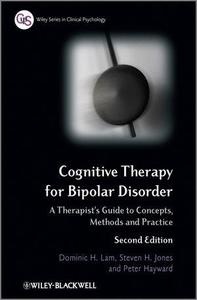


![S.T.A.L.K.E.R. 2 / STALKER 2: Heart of Chornobyl - Ultimate Edition (2024) [+UPDATE 23.12.2024 - v1.1.3] ElAmigos / Polska wersja językowa](https://i.postimg.cc/Zqd8RWGY/UZG8PBE.jpg)




































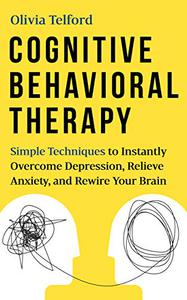
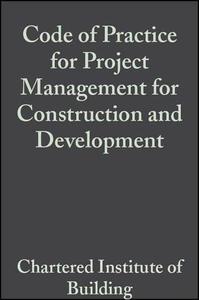
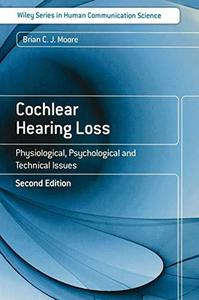




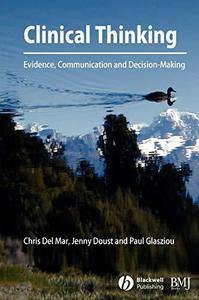







![David Gilmour - Luck and Strange (2024) [FLAC]](https://i.imgur.com/everaBc.jpeg)
![Męskie Granie Orkiestra - Męskie Granie 2024 (2024) [FLAC]](https://i.imgur.com/FAyOxrM.jpeg)
![The Rolling Stones - Hackney Diamonds (2023) [FLAC]](https://i.imgur.com/wCkyyUN.jpg)
![Lady Gaga - Harlequin (2024) [FLAC]](https://i.imgur.com/dcgIA8D.jpeg)
![Natalia Kukulska - Dobrostan (2024) [FLAC]](https://i.imgur.com/bdljG3O.jpeg)
![Kaśka Sochacka - Ta druga (2024) [FLAC]](https://i.imgur.com/hORQKvn.jpeg)
![Kuba Sienkiewicz - Pani Bóg (2024) [FLAC]](https://i.imgur.com/qijCx8Z.jpeg)
![Lanberry - Heca (2024) [FLAC]](https://i.imgur.com/8P7QfeR.jpeg)
![Sara James - PLAYHOUSE (2024) [FLAC]](https://i.imgur.com/m4f8OKg.jpeg)
![Grzegorz Hyży - EPILOG (2024) [FLAC]](https://i.imgur.com/8DA2sBr.jpeg)
![Myslovitz - WIECZORAMI CHŁOPCY WYCHODZĄ NA ULICE (2024) [FLAC]](https://i.imgur.com/l9mMtIG.jpeg)
![Krzysztof Zalewski - ZGŁOWY (2024) [FLAC]](https://i.imgur.com/vh48RAc.jpeg)
![Krzysztof Cugowski - Wiek to tylko liczba (2024) [FLAC]](https://i.imgur.com/SBzgqe2.jpeg)
![Nosowska - Kasia i Błażej (2024) [FLAC]](https://i.imgur.com/mObvVXQ.jpeg)
![sanah - Pianinkowe Kaprysy (2024) [FLAC]](https://i.imgur.com/pVjjPAa.jpeg)
![Kwiat Jabłoni - Pokaz slajdów (2023) [FLAC]](https://i.imgur.com/diERHfZ.jpg)
![Robert Cichy - Spacer po Warszawie (2024) [FLAC]](https://i.imgur.com/ixleU9o.jpeg)
![Viki Gabor - Terminal 3 (2024) [FLAC]](https://i.imgur.com/Q1KCnDs.jpeg)
![Sanah - Kaprysy (2024) [FLAC]](https://i.imgur.com/71OZm4h.jpeg)
![Męskie Granie Orkiestra - Męskie Granie 2023 (2023) [FLAC]](https://i.imgur.com/U4YHo8d.jpg)




